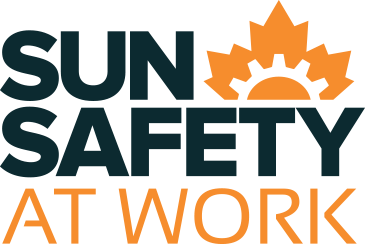Check is the fifth step of the Model Sun Safety Program. This step monitors how well the controls and other processes are working. If needed, corrective action should be taken to improve or fix processes. These processes are used for the management of all workplace hazards, including sun safety.
Incident Reporting and Investigation
Whenever a workplace incident or accident occurs, internal and external reporting is required. Internal workplace procedures often start with the first aid response record. It should also include an incident report. In response to an incident, most jurisdictions require the workplace to do an investigation to understand the cause of the incident and to prevent the incident from happening again. This investigation is often undertaken by the supervisor or the occupational health and safety coordinator.
Each jurisdiction has a definition of what a ‘reportable’ incident is. We encourage workplaces to initiate internal reporting and investigation when an incident due to sun exposure occurs, even if it is not required to be reported. This will help the workplace identify factors that lead to the incident, which will help to prevent the incident from happening again.
Workplace Inspections
Regular workplace inspections are required to be undertaken by occupational health and safety legislation. The purpose of a workplace inspection is to identify and correct unsafe conditions, practices and behaviours.
Inspections can be done daily, weekly, monthly and yearly. Employees are encouraged to undertake informal daily inspections of their own workplace to identify hazards and then take action to reduce the risks. Formal inspections are often undertaken using an inspection checklist.
Considerations of sun safety should be included in the regular inspection process of a workplace. Inspection checklists can include considerations for:
- Proper use of sun safety personal protection
- Condition of canopies and other shade structures
- Changes in job tasks which require additional sun safety control/protection measures
- Sun safe practices of workers
Documentation, Records and Statistics
Keeping records of safety programs, activities, plans, equipment and training is required under occupational health and safety legislation. These records provide evidence that the workplace is doing all it can to prevent illness and injury.
Review and analysis of these records and the calculation of OHS statistics is a way for the workplace to review the effectiveness of their occupational health and safety management system (OHSMS), and identify areas for improvement.1 These reviews are often done monthly and yearly and results may be reported in a monthly safety summary.
For sun safety, records to be kept will include sun safety risk assessments, changes in control measures, first aid records, workplace inspections, incident reports and investigations, and outcomes of these will normally be collated in the monthly safety summaries.
A document control process is also needed to ensure:2
- Review and approval of documents by appropriate people
- Revision of documents when needed, easy access and availability of documents
- Appropriate storage and security of documents
- Removal of documents that are no longer needed
- Archiving of documents when necessary
Auditing and Evaluation
An audit is a broad review of a workplace’s occupational health and safety policies and procedures. It helps to assess how effective the occupational health and safety management system (OHSMS) or occupational health and safety program (OHSP) is in protecting workers and achieving its objectives. Audits should be completed each year and can be done by someone internal or external to the workplace.
A review of how well the various elements of the Model Sun Safety Program have been implemented and how effective the workplace is in protecting workers from sun exposure will be included in the broader OHSMS audit. If there are large operational changes or situations which indicate that workers are at significant risk, an audit of the sun safety program could be undertaken independently of the broader OHSMS audit.
Evaluation is the process through which the workplace ensures that all preventive and corrective actions, including those identified through workplace inspections and audits, are recorded and tracked. This helps to ensure they are successfully implemented.3
Processes to monitor and evaluate the implementation of sun safety prevention and corrective actions should be included with the broader OHSMS’s processes for evaluation.
Build Your Own Program Tips:
Evaluation
Use the status section of the Action and Evaluation Plan Template to review whether the Action Plan has improved sun safety, and to what extent.
Periodic Review
Use the results of the evaluation and a review of documentation for periodic reviews (for example, annually) of the sun safety program. This help to ensure that the most effective and appropriate sun safe measures are being implemented.
Communication and Consultation
Put processes in place to make sure workers can be involved in the evaluation and periodic review of the sun safety program. Open communication about the results and an ability for everyone in the workplace to participate in determining new priorities is critical to the ongoing effectiveness of the program.
The next step in the Model Sun Safety Program is Step 6: Act
Go back to Step 4: Do-Support
- 1. Implementing an Occupational Health and Safety (OH&S) Program. (2012). Hamilton, ON: Canadian Centre for Occupational Health and Safety.
- 2. Kausek, J. (2007). OHSAS 18001: Designing and Implementing an Effective Health and Safety Management System. Maryland: Government Institutes.
- 3. Implementing an Occupational Health and Safety (OH&S) Program, 2012.

